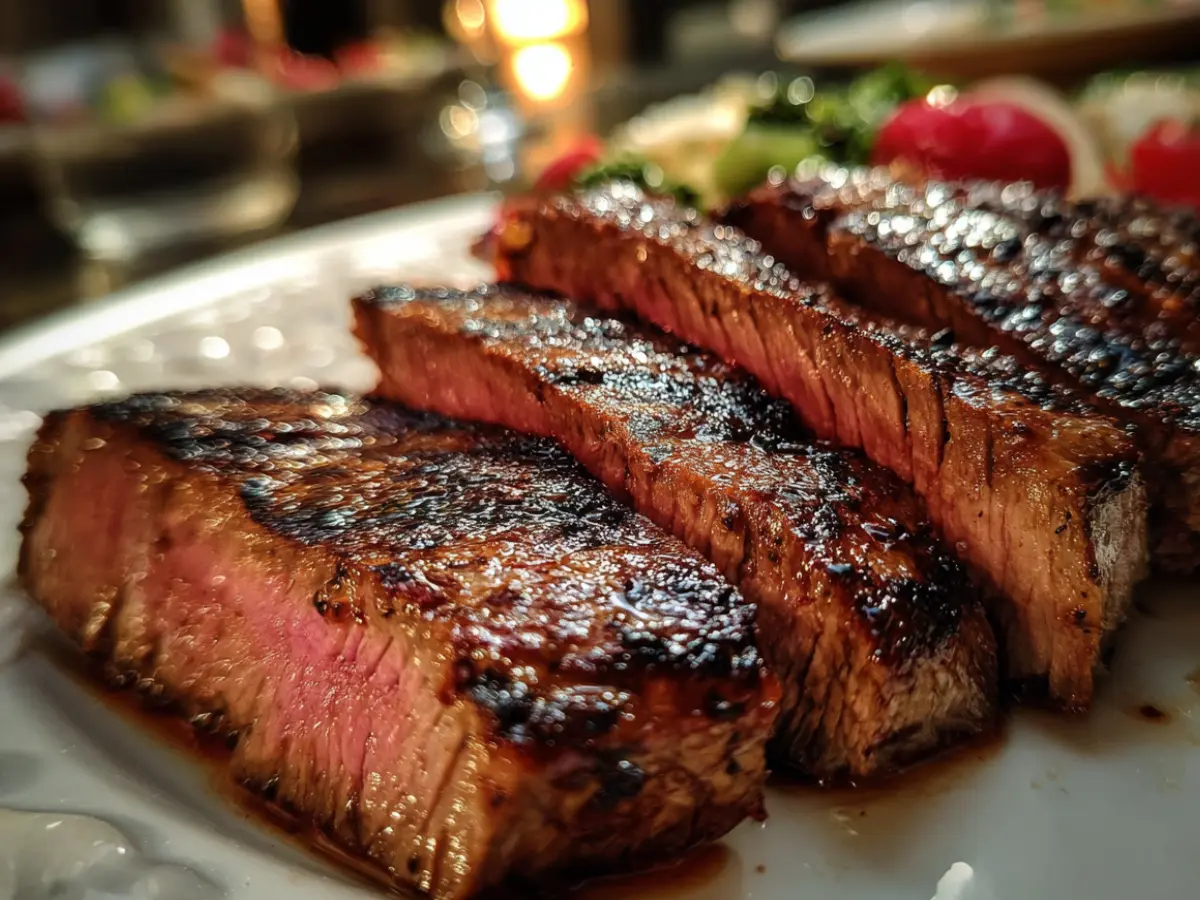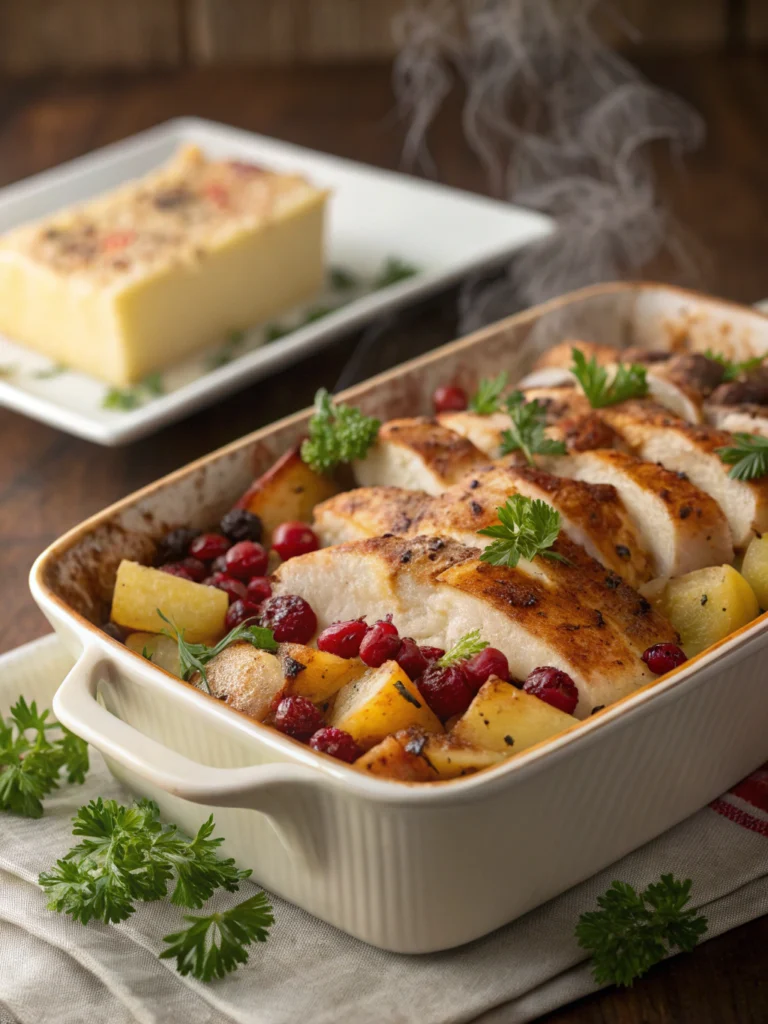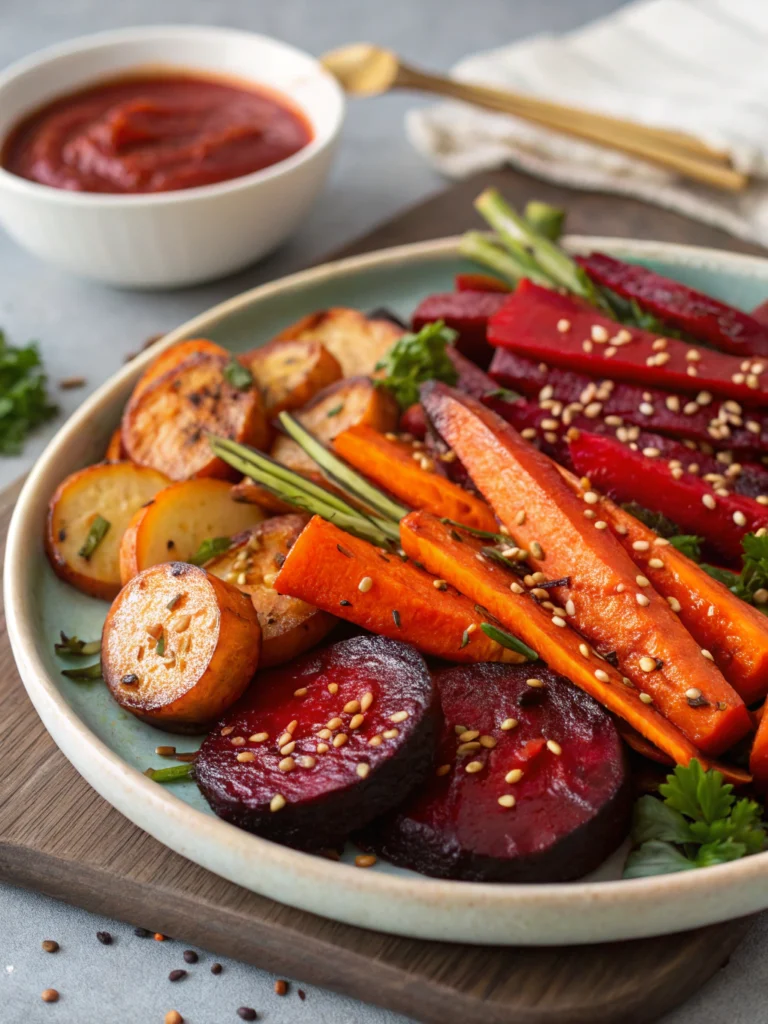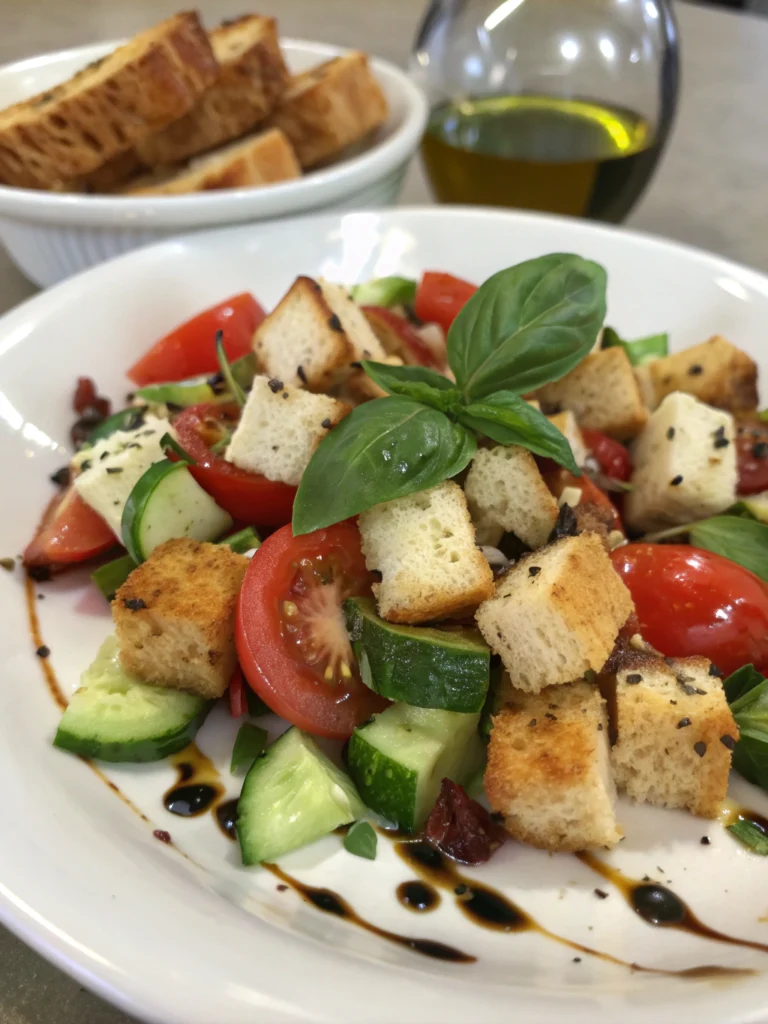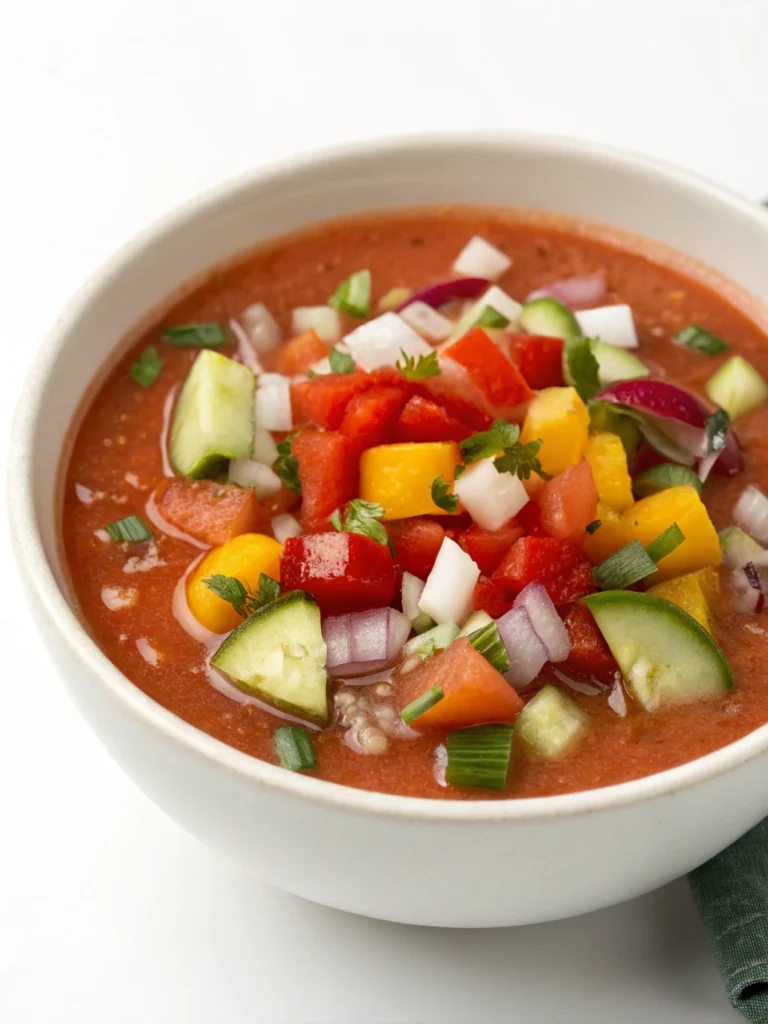Cooking the perfect beef flank steak can be a game-changer for any home cook. I’ve experienced firsthand how this lean, flavorful cut of meat can be both tender and tantalizingly delicious when prepared correctly.
Despite its potential, steak often gets a bad rap for being tough. However, with the right techniques, you can create a mouth-watering dinner in under an hour. The key is understanding how to bring out its rich flavor and tenderize it to perfection.
In this guide, I’ll walk you through the steps to master cooking flank steak using various methods, ensuring you achieve a deliciously tender result every time.
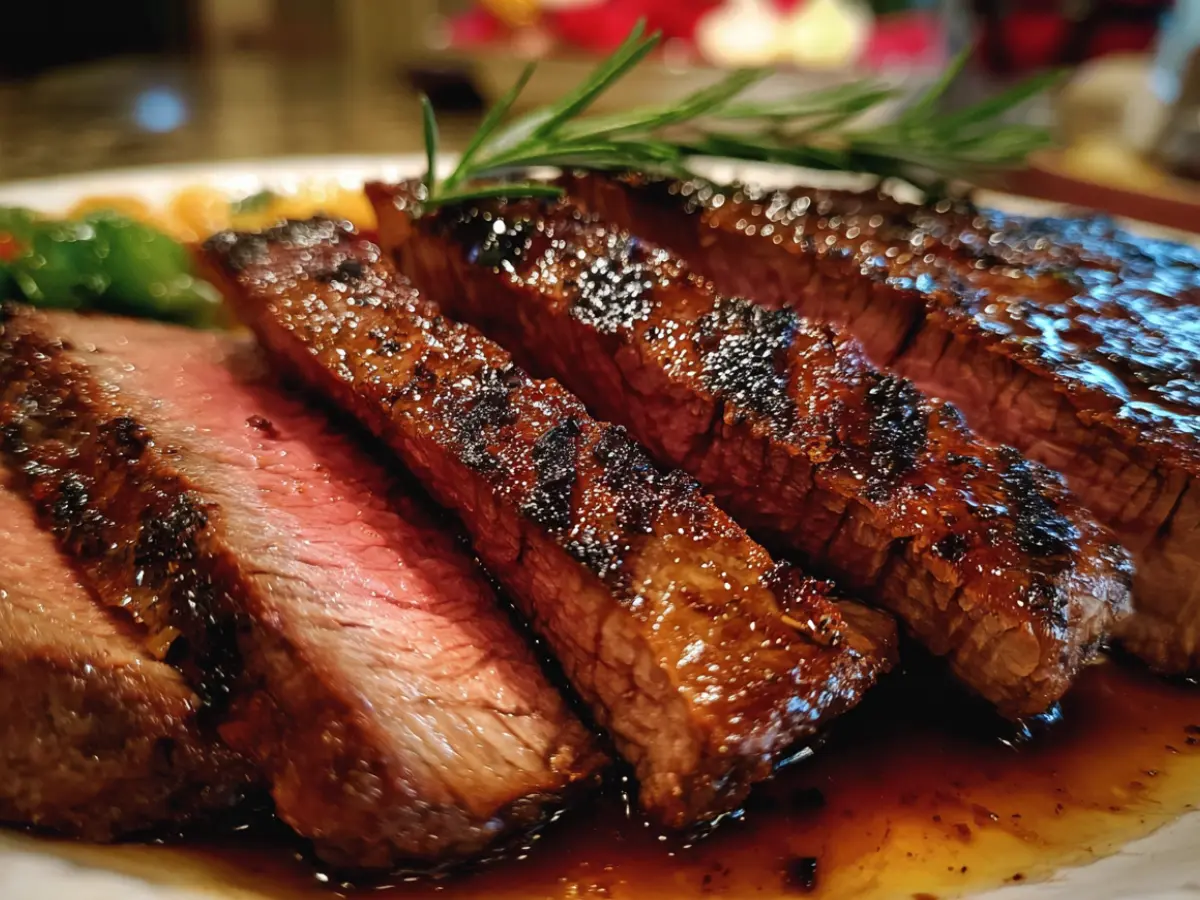
Key Takeaways
- Master the techniques to cook tender and flavorful flank steak
- Understand the different cooking methods for flank steak
- Learn how to avoid common mistakes that lead to tough steak
- Discover the versatility of flank steak in various dishes
- Impress your guests with a perfectly cooked steak dinner
Understanding Beef Flank Steak
To master cooking beef flank steak, it’s essential to understand its unique characteristics. Flank steak is a cut of beef that comes from the belly of the cow, known for its robust flavor and lean nature.
What is Flank Steak?
Flank steak is a relatively tough cut of meat that’s low in fat. This characteristic means it doesn’t require trimming, making it an economical choice compared to other cuts. Its lean nature also means it benefits significantly from a good marinade, which can enhance its tenderness and flavor.
Why Flank Steak Needs Special Preparation
The flank steak is considered a tougher cut due to its long muscle fibers and lack of marbling (intramuscular fat). To make it tender and juicy, special preparation methods are necessary. One effective way to tenderize flank steak is through marinade, which helps break down the tough connective tissues. Proper cutting technique, such as slicing against the grain, is also crucial for achieving tenderness.
The unique characteristics of flank steak make it versatile and capable of absorbing a wide range of flavors from marinades and seasonings, making it a great choice for various recipes.
Essential Tools and Ingredients
The key to a delicious flank steak lies in the preparation, which begins with gathering the right tools and ingredients.
Kitchen Equipment You’ll Need
To cook a perfect flank steak, you’ll need some essential kitchen equipment. This includes a large cutting board for preparation, a meat mallet for tenderizing, and a grill or skillet for cooking.
Basic Ingredients for Perfect Flank Steak
A basic marinade for flank steak consists of oil, soy sauce, red wine vinegar, lemon juice, Worcestershire sauce, Dijon mustard, garlic, and ground pepper. The essential ingredients include oils like olive or vegetable oil, acids such as vinegar or citrus juices, and seasonings like salt, pepper, and garlic. Umami-rich ingredients like soy sauce enhance the beef’s natural flavors, while herbs and spices like rosemary and thyme add depth. Using fresh garlic instead of garlic powder can make a significant difference in flavor.
Creating the Perfect Flank Steak Marinade
Creating a perfect flank steak marinade is an art that elevates the flavor and tenderness of this lean cut. A well-designed marinade can make a significant difference in the overall dining experience.
Classic Marinade Recipe
A classic marinade for flank steak typically includes a mix of olive oil, soy sauce, garlic, and herbs like thyme or rosemary. To marinate flank steak effectively, combine these ingredients in a bowl, then coat the steak evenly. This blend provides a balanced flavor profile that complements the natural taste of the beef.
Marinade Variations to Try
For those looking to experiment, variations can include adding citrus juice for a brighter flavor or using different spices like cumin or chili powder for a more exotic taste. The key is to balance flavors without overpowering the steak.
How Long to Marinate Flank Steak
The time to marinate flank steak can vary, but generally, 2 to 6 hours is sufficient for good results. For maximum flavor, marinating overnight or up to 12 hours is recommended. However, be cautious not to marinate beyond 24 hours, as this can make the meat mushy.
Preparing Your Beef Flank Steak
Preparing your beef flank steak properly is essential for a delicious outcome. This involves two crucial steps: tenderizing and seasoning.
Tenderizing Techniques
Tenderizing your flank steak can make a significant difference in its texture and overall palatability. While flank steak is typically already relatively lean, using techniques such as pounding or scoring can help break down its fibers, making it more tender.
Seasoning Tips
Seasoning is a critical step that enhances the natural flavor of your steak. I recommend sprinkling one side with salt and freshly ground black pepper, followed by a sprinkle of dry mustard, and then rubbing butter all over the surface. Repeating this process on the other side ensures even flavor distribution. It’s also important to pat dry the steak after marinating to ensure good surface contact and browning during cooking.
Proper seasoning timing, quantity, and layering can significantly impact the final result. Avoid common mistakes like under-seasoning or applying spices that burn easily during high-heat cooking.
Grilling Flank Steak to Perfection
With the right techniques and a bit of practice, you can master grilling flank steak to perfection. Grilling is a straightforward process, but it requires attention to detail to achieve the best results.
Preparing Your Grill
Before grilling, preheat your grill to the right temperature. Ensure the grates are clean and brush them with oil to prevent sticking.
Ideal Grilling Temperature
The ideal grilling temperature for flank steak is high heat, around 450°F to 500°F. This helps to sear the outside quickly, locking in juices.
Grilling Time and Technique
Grill the flank steak for 3 to 5 minutes per side, depending on the thickness and your desired level of doneness. Use tongs to flip the steak, as they don’t pierce the meat like a fork would.
How to Check for Doneness
To check for doneness, use a meat thermometer or the finger test. For rare, the internal temperature should be 125°F, and for medium-rare, it should be 130°F to 135°F. You can also use the finger test by comparing the firmness of the steak to the flesh between your thumb and index finger.
By following these steps, you can achieve a perfectly grilled flank steak that’s sure to impress.
Cooking Flank Steak in the Oven
The oven provides a controlled environment for cooking flank steak, ensuring a tender result. This method is particularly useful when grilling is not an option.
Cooking steak in the oven involves two main techniques: broiling and baking. Both methods require attention to temperature and timing to achieve the desired level of doneness.
Broiling Method
Broiling involves cooking the steak under high heat. To broil flank steak, preheat your oven’s broiler and place the steak on a broiler pan. Cook for 3-5 minutes per side, or until it reaches your desired level of doneness.
Baking Method
Baking is a more gentle method, where the steak is cooked in the oven at a consistent temperature. For baking flank steak, preheat your oven to 350°F. Sear the steak first in a hot pan, then transfer it to the oven to finish cooking until it reaches the desired internal temperature.
Some key benefits of oven cooking include the ability to add aromatics like garlic and herbs to the pan before finishing in the oven, and the ease of achieving a consistent result.
- Preheat the oven to 350°F for baking.
- Sear the steak in a hot pan before transferring it to the oven.
- Use a meat thermometer to check for doneness.
Stovetop Flank Steak Method
Stovetop cooking is an excellent way to achieve a perfectly cooked flank steak with a rich, caramelized crust. This method allows for a quick sear, locking in the juices and flavors of the steak.
Pan-Searing Technique
To pan-sear flank steak, heat a skillet or cast-iron pan over high heat. Add a small amount of oil to the pan, then place the steak in it. Sear the steak for 3-4 minutes per side, or until it reaches your desired level of doneness. Use a thermometer to check for internal temperature. The pan-searing technique is crucial for achieving a flavorful crust on the steak.
Creating a Pan Sauce
After cooking the steak, remove it from the pan and let it rest. Return the pan to high heat and deglaze it with a little water, scraping up any browned bits. Once the water has mostly boiled down, add a tablespoon of butter to the pan to create a rich and flavorful sauce. You can also add aromatics like shallots, garlic, or herbs to the pan for added depth of flavor. The resulting pan sauce will complement the flank steak nicely, enhancing its overall flavor and juice.
Slicing and Serving Your Flank Steak
After cooking, the way you slice and serve your flank steak can elevate the dining experience. Proper resting and slicing techniques are crucial for achieving tender and flavorful results.
The Importance of Resting
Resting your steak after cooking allows the juices to redistribute, making it more tender and flavorful. I recommend letting it rest for at least 5-10 minutes before slicing.
How to Slice Against the Grain
To slice your flank steak against the grain, identify the direction of the muscle fibers and cut perpendicular to them. This technique ensures a more tender bite.
Serving Suggestions
Pair your marinated flank steak with a variety of side dishes, such as a fresh salad, grilled or roasted veggies, or something starchy like mashed potatoes. You can also use it in fajitas or as part of a stir-recipe like beef and broccoli. Consider adding a sauce like chimichurri or horseradish cream to enhance the flavor.
Conclusion
Mastering the art of cooking beef flank steak opens up a world of culinary possibilities. By understanding the unique characteristics of flank steak and applying the right techniques, you can achieve a dish that’s both flavorful and tender.
The key takeaways from this article – from creating the perfect marinade to slicing against the grain – will help you elevate your cooking skills. Whether you’re grilling, baking, or pan-searing, the methods discussed provide a solid foundation for preparing steak to perfection.
Your cooked beef will keep for up to 3 to 4 days when stored properly, and it reheats easily for future meals, such as a hearty breakfast burrito or a quick pepper steak bowl. Experimenting with different recipes and sauce variations will help you find your preferred way of enjoying flank steak.
FAQ
How long should I marinate my flank steak?
I recommend marinating for at least 2 hours or overnight to achieve the best flavor. The acidity in the marinade helps to tenderize the meat, making it more palatable.
What’s the ideal grill temperature for cooking steak?
Preheat your grill to medium-high heat, around 400°F to 450°F. This temperature range allows for a nice sear on the outside while cooking the inside to your desired level of doneness.
How do I check if my steak is cooked to the right doneness?
Use a meat thermometer to check the internal temperature. For medium-rare, the temperature should be around 130°F to 135°F. Let it rest for a few minutes before slicing.
Can I cook flank steak in the oven?
Yes, you can cook it in the oven using the broiling or baking method. Broiling gives a nice crust on the outside, while baking helps retain moisture.
How do I slice steak correctly?
Slice the steak against the grain using a sharp knife. This ensures the meat is tender and easier to chew.
What’s a simple marinade recipe I can try?
Mix together 1/4 cup of lemon juice, 2 tablespoons of oil, 1 teaspoon of ground black pepper, and your choice of herbs. Adjust the ingredients to taste.
How long should I let the steak rest before serving?
Let it rest for 5 to 10 minutes. This allows the juices to redistribute, making the steak more flavorful and tender.

